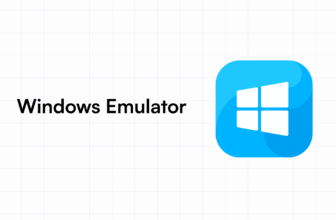
The rapid rise of generative artificial intelligence has sent ripples of excitement and anxiety through nearly every creative industry, and video game development is no exception.
With AI tools now capable of generating text, code, and even entire game concepts, the question on many minds is both direct and existential: Will AI replace game writers?
The answer, like the narratives in the best games, is not a simple yes or no.
While AI is poised to fundamentally reshape the craft of game writing, it is more likely to evolve the role into a powerful human-machine collaboration than to render it obsolete.
The future of game writing isn’t about replacement; it’s about augmentation.
Table of Contents
The AI Co-Writer: A Tool for Productivity and New Possibilities

Source: capstan.be
Today, AI is already being integrated into the game development pipeline, not as a replacement for human creativity, but as a powerful assistant that can handle tedious tasks and unlock new creative avenues.
For game writers, AI tools can act as tireless brainstorming partners, generating a wealth of ideas for quests, characters, and plot points in seconds.
They can help outline complex narratives, draft item descriptions, and even produce initial versions of dialogue, significantly speeding up the early stages of development.
This automation of repetitive work frees up writers to focus on higher-level creative thinking, such as refining themes, deepening character arcs, and ensuring narrative coherence.
Perhaps the most exciting application lies in creating more dynamic and responsive game worlds.
AI can power non-playable characters (NPCs) to move beyond repetitive, scripted dialogue, allowing them to react realistically to player actions and the changing game state.
Imagine a world where characters remember your choices, where quests adapt on the fly, and where the story genuinely evolves with you.
This level of personalized, adaptive storytelling, once prohibitively complex to script manually, is now within reach, promising unprecedented levels of player immersion and replayability.
Studios are already experimenting with these possibilities, using AI to lend an improvisational spontaneity to their games that was once the exclusive domain of tabletop role-playing.
The Ghost in the Machine: Where AI Falls Short
Despite its impressive capabilities, AI has significant limitations that prevent it from fully supplanting the human writer.
At its core, AI is a pattern-matching machine trained on vast amounts of existing data. It excels at mimicry but lacks genuine understanding, emotional depth, and the lived experience that informs compelling storytelling.
Key limitations include:
- Lack of Originality and Nuance: AI-generated content can often feel formulaic or flat because it reassembles patterns from its training data rather than creating something truly new. It struggles to grasp subtext, irony, and the subtle emotional nuances that make for memorable characters and dialogue. As one professor noted, AI can’t understand what is not said, a crucial element of sophisticated literature.
- The Human Element: Writing is fundamentally a human act of making sense of the world and connecting with others. Great stories are born from empathy, cultural understanding, and a unique point of view qualities that an algorithm cannot possess. The “human touch” is what gives a story its soul, and players can often spot when it’s missing.
- Ethical and Technical Hurdles: Generative AI is prone to “hallucinations” (generating fabricated information), inconsistencies, and potential copyright issues, requiring careful human oversight. Without proper guardrails, AI can produce nonsensical or immersion-breaking content, undermining the player’s experience.
The Evolving Role: From Writer to Narrative Director

Source: thegospelcoalition.org
The rise of AI doesn’t signal the end of the game writer; it signals the evolution of the role. The writer of the future will likely function more like a creative director or a narrative architect, skillfully guiding AI tools to achieve a specific artistic vision.
Instead of writing every line of dialogue, their job will be to:
- Set the Creative Vision: Define the game’s core themes, establish the tone, and design the overarching narrative structure.
- Curate and Refine: Guide AI systems by setting clear parameters and constraints, then curate, edit, and refine the generated content to ensure it meets quality standards and aligns with the creative vision.
- Empower Creativity: Use AI to rapidly prototype narrative ideas and even implement them directly, potentially rebalancing the traditional power dynamic between creative and technical teams in game development.
This shift means that aspiring writers must not only hone their traditional storytelling skills but also become proficient in using these new technologies.
For those looking to enter the field, a structured program like Elvtr course How to Become a Video Game Writer can be invaluable, teaching the high-level process of turning an abstract idea into a playable, interactive experience while incorporating the latest tools and workflows.
Conclusion: A Collaborative Future

Source: latimes.com
AI will not replace game writers. Instead, it will become an indispensable collaborator, a powerful tool that automates the mundane and opens the door to new forms of interactive storytelling.
It will handle the grunt work of generating variations, populating worlds with responsive characters, and adapting narratives in real-time, allowing human writers to focus on what they do best: creating the heart, soul, and meaning of the story.
The future of game writing belongs not to the machine, but to the human writer who learns to conduct the AI orchestra.
The most compelling, immersive, and emotionally resonant games will be those that masterfully blend the computational power of AI with the irreplaceable spark of human creativity.







